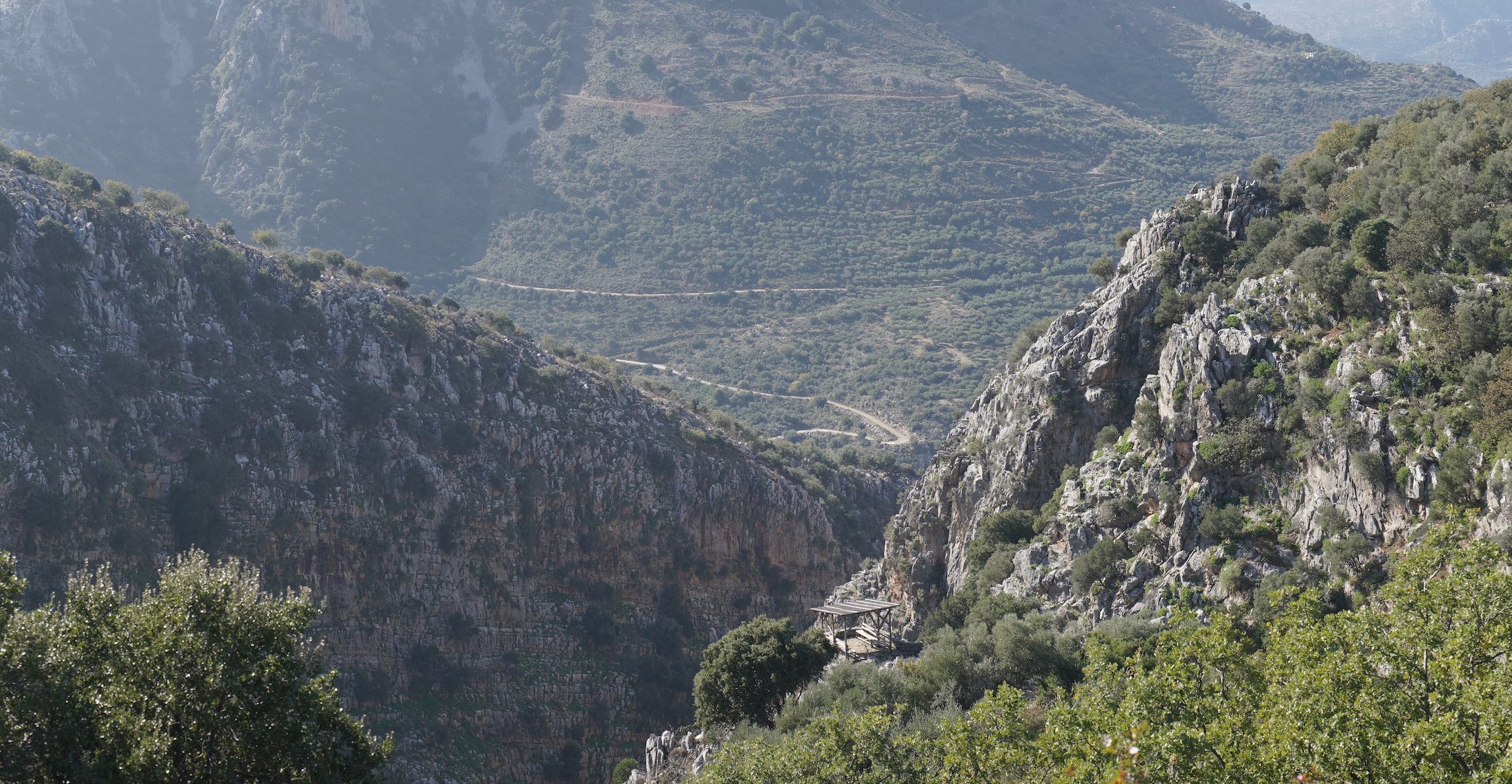
Among the peaks of Mount Dikti in Crete is the captivating Roza Gorge, an undiscovered treasure that beckons adventurers and nature enthusiasts. Often overshadowed by its more renowned counterparts like Samaria and Imbros, this lesser-known gorge boasts a distinctive blend of natural splendor, historical allure, and challenging hiking trails.
Derived from the Greek word for "rose," the Roza Gorge earns its name from the reddish hues of its sandstone rocks, sculpted over millions of years as the sea bed gradually ascended above the water's surface. These living walls, shaped by time and erosion, create a breathtaking spectacle as they tower over the narrow canyon floor. Winding through the heart of this geological masterpiece, the canyon trail provides breathtaking panoramic views of the surrounding mountains and the Mediterranean Sea.
Situated in the hinterland of the Municipality of Hersonissos, southeast of the Municipal Community of Gonia and south of the Municipal Community of Keras, the Roza Gorge is a vital natural ecosystem. To safeguard this wonder, the Municipality of Hersonissos has engaged a company to restore the gorge's path.
Explore Crete with a rental car from 13€ per day
The Roza Gorge, a branch of the Ambelos Gorge, originates from the region of Ano Keras, near the monastery of Panagia Keras Kardiotissa. It converges with the rural road within the Ambelos Gorge near Gonies. While steep downhill slopes hinder crossing the riverbed, a clearly defined hiking trail encircles the gorge.
Adding to its allure, the gorge's sides feature striking geological formations, captivating visitors with their unique 'pink' beauty. The presence of surface water, evidenced by flourishing oleanders in the riverbed, results from abundant rainfall.
The Roza Gorge poses a technical challenge, unsuitable for regular hiking due to steep descents (rappels) requiring specialized equipment and training. Canyoning enthusiasts should note that the highest rappel is approximately 18 meters, with secure relay points established by Crete's caving clubs. Descending the canyon with a small group typically takes about three hours. Located in proximity to Heraklion, the gorge is easily accessible and often serves as a site for canyoning schools.
The name "Rosa" stems from the pink hues adorning the canyon walls. Alternatively, a local version suggests the canyon was once a dumping ground for barren animals, leading to its original name 'Stira Za' (meaning sterile animals), later evolving into 'Sti Roza' (in Roza).
Spanning about 1,300 meters, the gorge features a captivating mix of vegetation and canyon morphology, creating an extraordinary and unusual landscape.
To preserve the natural wonder, the Municipality of Hersonissos has formalized a contract with an anonymous company for restoration work on the Roza Gorge path. Previous maintenance efforts, including the 2019 undertaking, were hampered by flooding in 2020 and substantial rainfall in 2022. Restoration is imperative to ensure safe passage through the gorge, according to Nea Crete.
The maintenance work encompasses cleaning the path, restoring passability, and maintaining and completing the metal and wooden railings. Combining the hiking route in the Roza Gorge with the neighboring Empasa Gorge offers the opportunity for a scenic circular route lasting about five hours. Visitors can also pair the hike with a visit to nearby villages (Avdos, Gonies, Kera, Krasi) and the artificial lake of the Aposelemi dam.

 Car hire
Car hire





